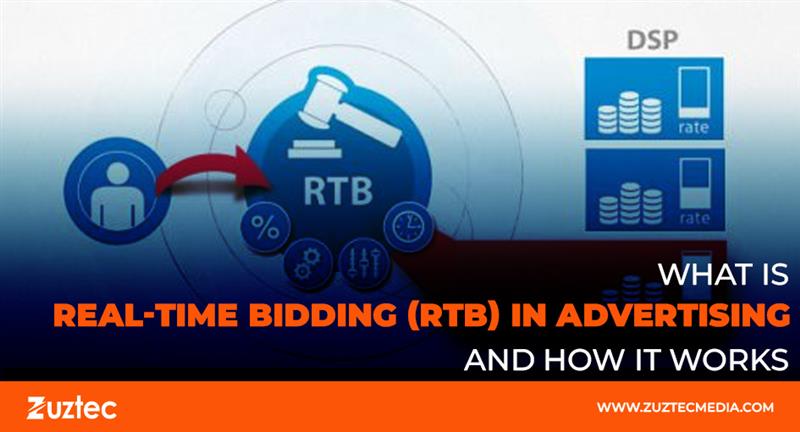
What Is Real-Time Bidding (RTB) in Advertising and How It Works
The way businesses buy and sell digital advertising has transformed significantly in recent years. Real-time bidding (RTB) in advertising is the technology at the heart of this shift. It’s an automated process that allows companies to bid on online ad space in real time. This means that every time a user opens a webpage or an app, advertisers compete for the chance to display their ad to that user, all in a fraction of a second.
This method is very different from traditional advertising, where ads were purchased in bulk and shown to large, general audiences. Real-time bidding enables advertisers to target users more accurately based on their online behavior, location, and interests. It also gives publishers a way to earn more money by selling ad space to the highest bidder for each impression.
RTB is a key part of what’s known as programmatic advertising—automated systems that manage the buying and selling of ad inventory using software and algorithms. For advertisers, RTB offers better control over how budgets are spent. For users, it can lead to more relevant and less intrusive ads.
Despite its benefits, RTB has also raised concerns about privacy, transparency, and data use. In this article, we’ll break down how real-time bidding works, explore its advantages and drawbacks, and look at the future of this fast-moving technology.
How real-time bidding (RTB) in advertising works
Real-time bidding is a type of auction that happens almost instantly. The process begins when someone visits a website or app that shows ads. As the page loads, the site sends a request to an ad exchange, which includes information about the user such as location, device type, and browsing history.
This request is sent to multiple advertisers, who use demand-side platforms (DSPs) to evaluate the information and decide how much they’re willing to bid for the ad impression. The highest bidder wins, and their ad is shown to the user, all in under a second.
The advertiser is charged only if the ad is shown, and the user doesn’t notice any delay while the auction takes place. This system helps ensure that ads are delivered to the right person, at the right time, and in the right context.
Benefits of RTB for advertisers
Real-time bidding offers several important advantages for advertisers:
- Precise targeting: Advertisers can focus their efforts on users who are more likely to take action, such as making a purchase or clicking on an ad.
- Efficient spending: Since advertisers pay only for impressions that match their criteria, they avoid wasting money on uninterested viewers.
- Instant adjustments: Campaigns can be monitored and adjusted in real time based on performance data, improving results quickly.
How publishers benefit from Real-time bidding (RTB) in advertising
Publishers—like websites, blogs, or mobile apps—also gain several advantages by using real-time bidding:
- Increased competition: Multiple advertisers can bid on each impression, driving up prices and boosting revenue.
- Faster sales: Ad space is filled automatically, saving time and reducing reliance on direct sales teams.
- Smarter delivery: RTB systems match advertisers with relevant users, improving user experience and ad effectiveness.
For publishers, this model helps fill ad slots with higher-paying, more relevant content, creating a win-win for both parties.
The future of real-time bidding
RTB is still evolving, and several trends are shaping its future:
- More privacy controls: With increasing regulations, platforms are developing ways to protect user data while still offering targeting options.
- Less reliance on cookies: As third-party cookies are phased out, advertisers are turning to first-party data and contextual targeting.
- Better fraud protection: Improved technology is helping detect and prevent fake traffic and invalid clicks.
- AI and machine learning: These tools are enhancing how bids are made and which users are selected, making RTB even more effective.
As these developments continue, real-time bidding is likely to remain a key part of the advertising landscape—more refined, more respectful of privacy, and more results-driven.
However, real-time bidding (RTB) in advertising has become a powerful tool for marketers and publishers alike. It allows for highly targeted, cost-efficient ad campaigns while helping media platforms earn more from each impression. By automating the ad-buying process and enabling bids in milliseconds, RTB has changed how digital advertising works.
Still, this technology must be handled with care. Issues like user privacy, transparency, and fraud need continued attention. As rules and tools evolve, the goal will be to keep RTB effective while also respecting the rights and preferences of everyone involved.
When used responsibly, real-time bidding has the potential to create better experiences for advertisers, publishers, and users. It’s not just about speed—it’s about making smarter, more ethical choices in digital advertising.

